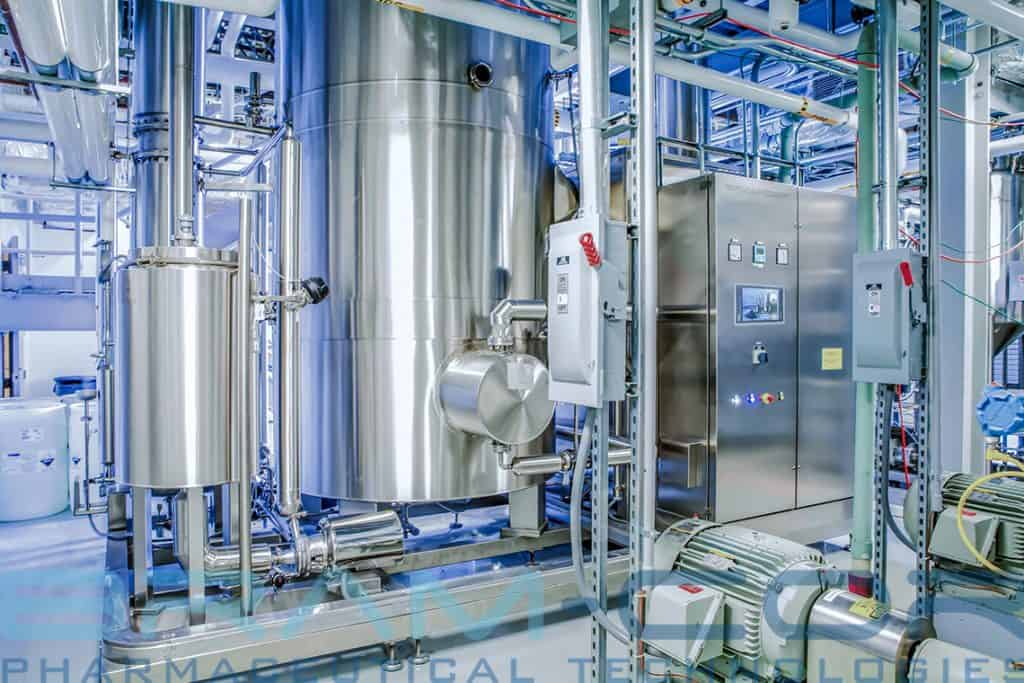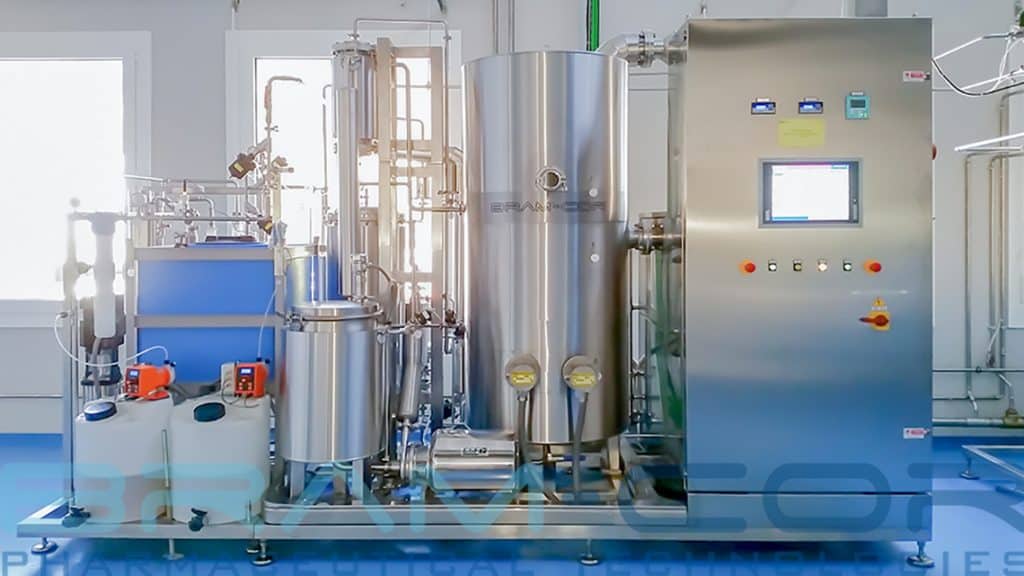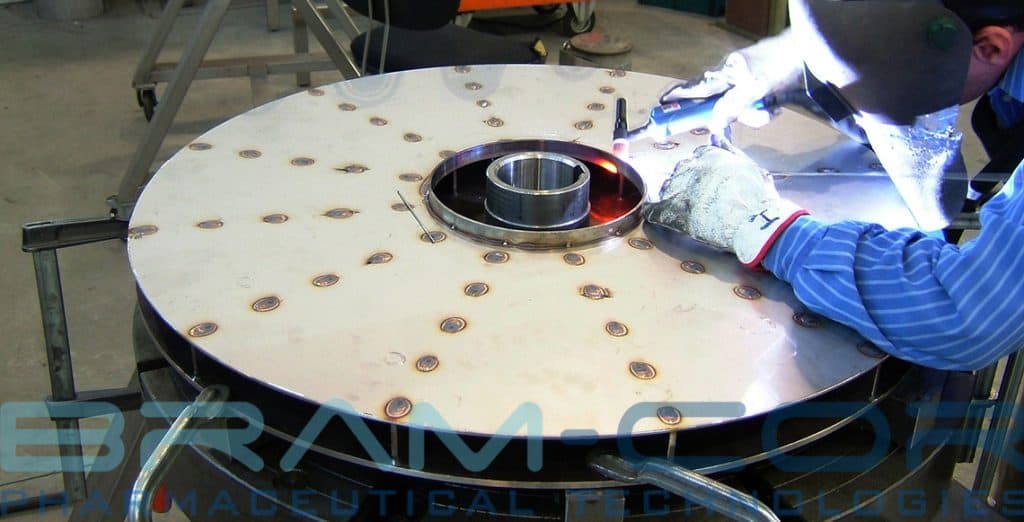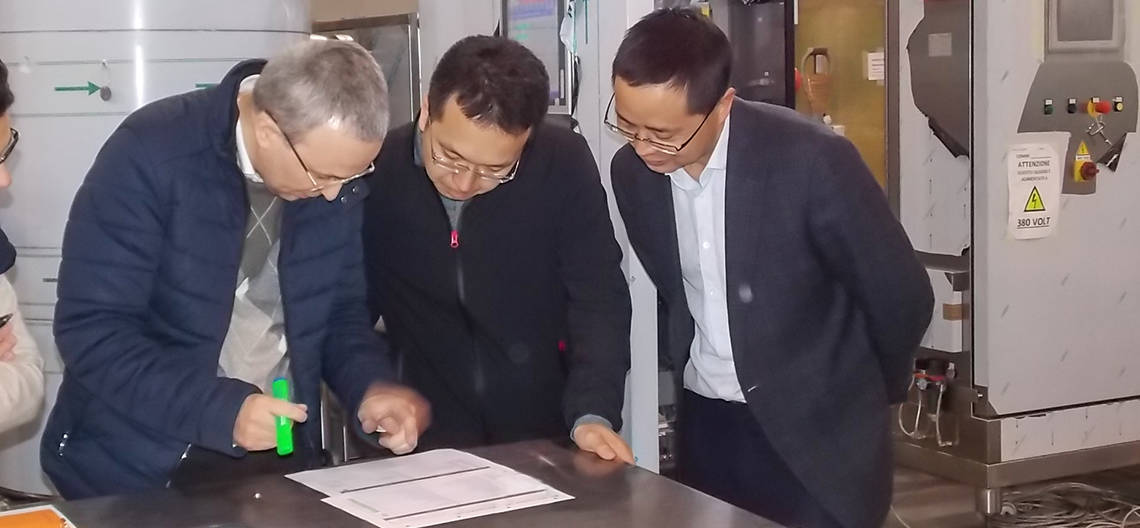WFI FROM DISTILLATION: FOREVER THE MAIN SYSTEM

The main systems to obtain WFI in the pharmaceutical industry are the distillation through vapor re-compression (VC) and the Multiple Effect Distillation (ME). Both technologies have been applied in many other fields, but Vapor Compression distillation system is much appreciated in biopharma applications, either for its design simplicity, with no particular criticalities, or for its functional reliability, ensuring quality consistency in WFI production.
THERMOCOMPRESSOR, MECHANICAL VAPOR COMPRESSION, THERMOCOMPRESSION…
In industrial machinery manufacturing, different terms refer to the “vapor compression distiller” (the most correct diction in relation to STMC still). For example: thermocompressor, thermocompression distiller, mechanical vapor compression or recompression system, … Technically, it is an evaporation technology used in many areas, from desalination to the separation of hydrocarbons. Also air-conditioning and refrigeration system use compressed vapor, in different ways.

The operating pressure of a VC distiller is low, though higher than ambient pressure, preventing contamination of the treated water. The whole production cycle is thus potentially resistant to external hazards.
VAPOR COMPRESSION DISTILLATION. A SHORT HISTORY
Water Distillation Technology was developed in 1908 in Italy. It was based on Vapor Compression. Its use was mainly for desalination purposes. The basics of that process are quite simple:
– Since the Temperature of any gas is related to the pressure, by running a small electrical motor it is possible to suck and compress the pure steam at high temperatures, thus getting a Delta T of over 40°C only with a small electrical consumption.
– Since the overheated compressed pure steam is crossing, through an exchanger, the cooler inlet water, the condensation of the pure steam into Water for Injection is not requiring any additional cooling water.
FROM MILITARY PURPOSES TO PHARMACEUTICAL APPLICATIONS
After Second World War this technology was applied also to the First Pharmaceutical Industries. In a few year more than 2000 plants had been installed in the world. These equipment had the obvious problems of :
– noisy compressor
– high maintenance problems
– leakage from the seals
Since this technology was utilized also for military purposes, a back copy of all drawings of these Vapor Compression distillers were stored, to avoid the risk of being destroyed during bombing. The drawings, after the war disappeared.
Until the end of the ‘80s, in Europe the VC technology was not subjected to developments. When Ponzini had been sold the first time in 1995, the main staff of Ponzini split and created a new company called Cor (currently BRAM-COR). The first investment they made was to solve all old problems of the previous Vapor Compression distiller. This goal by installing a brand new efficient compressor (multistage impeller), using FDA approved mechanical seals, changing all control software, etc. After being re-sold in 2003, given to several troubles, Ponzini has been officially closed on May 25, 2005.
A NEW PATENDED MULTISTAGE COMPRESSOR
To obtain WFI from vapor compression distillation system with more efficiency, in the ‘90s, BRAM-COR improved VC technology, with the creation of a new patented multistage compressor, reaching the title of ‘Laboratory of Research for Water Treatment Systems’ given by the Italian Ministry of University and Research. So, the highest technology on the market allowed the achievement for BRAM-COR of the European leadership in this technology. VC is currently taking market shares against the Multiple Effect (ME) technology in the Pharmaceutical and Biotech companies, in the world, thanks to its low operational cost.

ABOUT THE BRAM-COR MULTISTAGE BLOWER
The first company in the world using a compressor for distilling water was Ponzini (1918), with an old bronze lobe volumetric compressor. The shape of this compressor has been modified in the following years. The last model of this bronze compressor came in the market in 1954. It was a again a lobe compressor, all in bronze, with 4 seals in cotton, bearings in oil, with 600-900 rpm, reaching a Delta of Temperature of about 10°C.
Some leading companies are still using this system, which, according to our experience, is very hard to be validated from FDA. According to what we know (they never competed in the European markets), other manufacturers from USA use small turbine compressors in stainless steel (maybe they are buying standard turbine from the market).
We guess they are more or less reaching our Temperature increase (T) of 30 – 35°C but they do it with smaller turbines and therefore they have to increase the rpm to 4 – 5 times more, therefore causing:
– high noise level
– high problems in maintenance
At the early 80s, Ponzini developed an own blower compressor, which is much simpler than a turbine compressor. The size of a blower can increase and therefore you can reduce the rotation speed of the impeller, down to about 5000 rpm. The first blowers were in stainless steel. This Blower had following innovations:
– only two External seals (Garlock) FDA approved
– no gears (and therefore no grease)
– Teflon gaskets
– self-lubricating bearings
– special stainless steel shaft with ceramic insertions (to increase the life of both the shaft and of the mechanical seals)
At the early 90s, COR (currently BRAM-COR) developed a new MULTISTAGE BLOWER compressor maintaining the listed innovations of the mechanical seals, etc of Ponzini, and:
– increasing the tolerances between the impeller and the shelf of the compressor (reduced noise level, <65 dB with the standard box, reduced maintenance);
– changing the shape of the impeller-wings;
– increasing the no. of stages of the impeller (actually some three stages), whereas reaching a T of 37 – 40°C at a slower speed of max. 4000 rpm.
Again, our BRAM-COR compressor is in aluminum but we could supply a Teflon coating or even make a stainless steel compressor.
Since we are using a blower, we have no problem in making a big stainless steel compressor. Others cannot do that, because both the volumetric and the turbine compressor have economical and physical size limits.

